Penang, Malaysia
April 1, 2023
During a visit to Penang, Malaysia we spent some time in the city of Georgetown, the capital. Georgetown is a city established about 150 years ago by British colonizers. It is home to many different ethnicities including Chinese, Indian, Arabian, Burmese and Malay people as well as expats from Eurasia, Thailand and elsewhere.
Beautiful gracious buildings built during British rule are located next to ornate temples and other colorful architectural masterpieces. Some of the temples reflect a mix of Buddhism and Confucianism. In addition to stops at several of these temples, we visited a water village located on one of several long jetties in the Straits of Malacca, located between mainland Malaysia and the island of Penang. We also visited a Clan house.
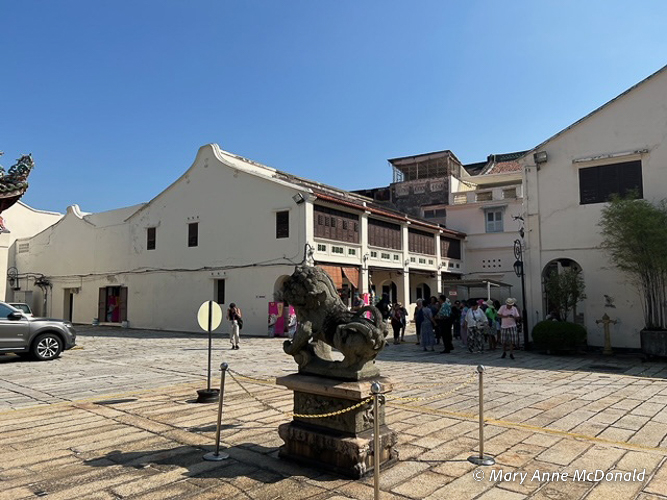
The water villages were established because buildings on land were taxed, while buildings over the water were not. We visited Chew Jetty, named after the captain of the ship that brought Chinese immigrants to Penang. It was common practice for immigrants with no connection to their new home to adopt as a group the surname of their boat captain. One of the boats that carried immigrants to Penang was captained by Captain Chew, a surname that many of the Chinese immigrants adopted. Hence the name Chew Jetty to describe the area.
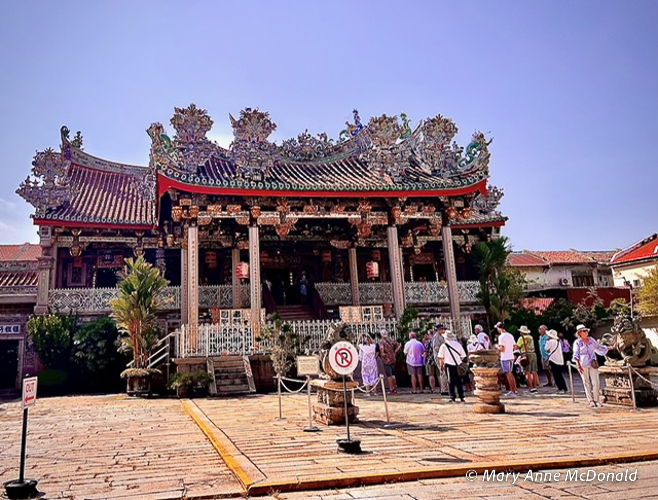
As Penang developed, a group Clan houses, or (“kongsi”) were established in Penang by wealthy Chinese immigrants. The goal was to provide temples, housing and assistance to newcomers. The Khoo Clanhouse, which we visited, is one of the largest. You enter the compound through a large walkway, which brings you away from the busy street and into a compound with an ornate temple, a registration office for the newcomers, and apartments for them. Newcomers received help obtaining work, housing, food, etc. until they could stand on their own two feet.
The Khoo Clanhouse was founded in 1835. Three areas make up the inside of the temple. There is a center area to worship of the god of prosperity. A small area to its right is for the worship of ancestors. It contains many replicas of gravestones from China where the ancestors were buried. Since the immigrants could not easily return to China, this area fulfilled a need for a local place to worship ancestors.
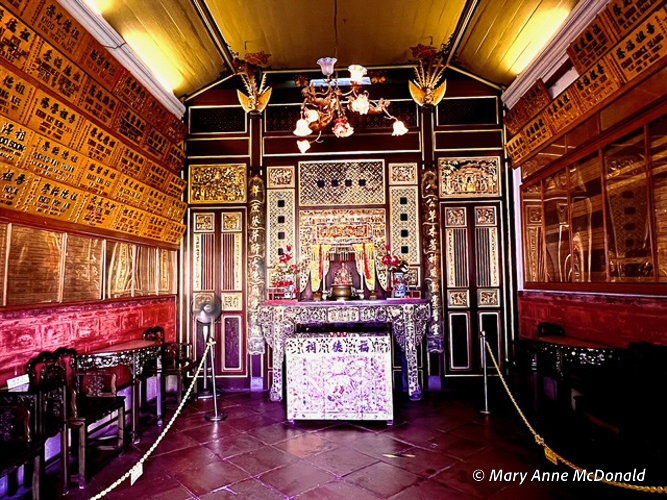
A small area to the left is a “hall of fame” with plaques to show the accomplishments of the Khoo family, and to inspire others. The plaques shown in the image below denote one surveyor, a recipient of the Bachelor of Science degree, and two barristers. There are hundreds of plaques in this area. Once a “hall of famer” dies, his plaque is moved to the ancestral worship temple.
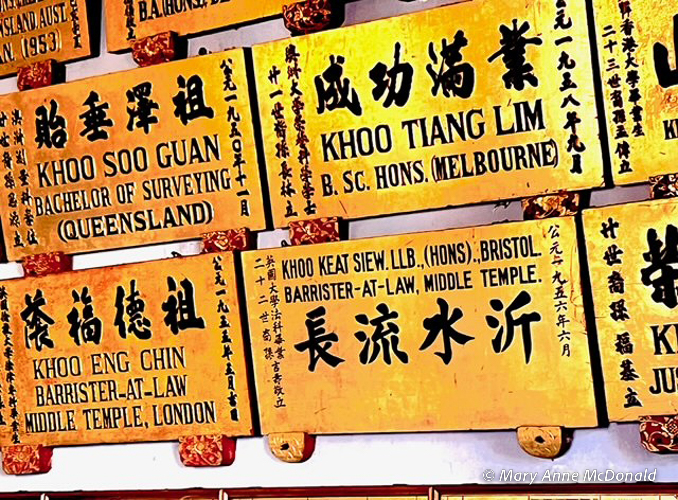
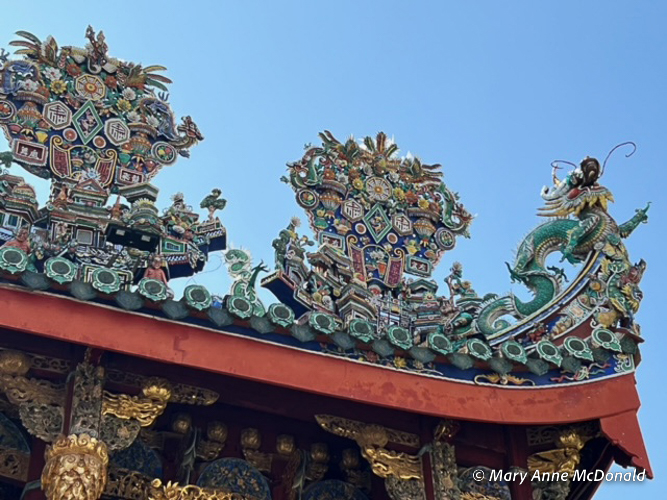
All in all a very interesting city.
MAM
